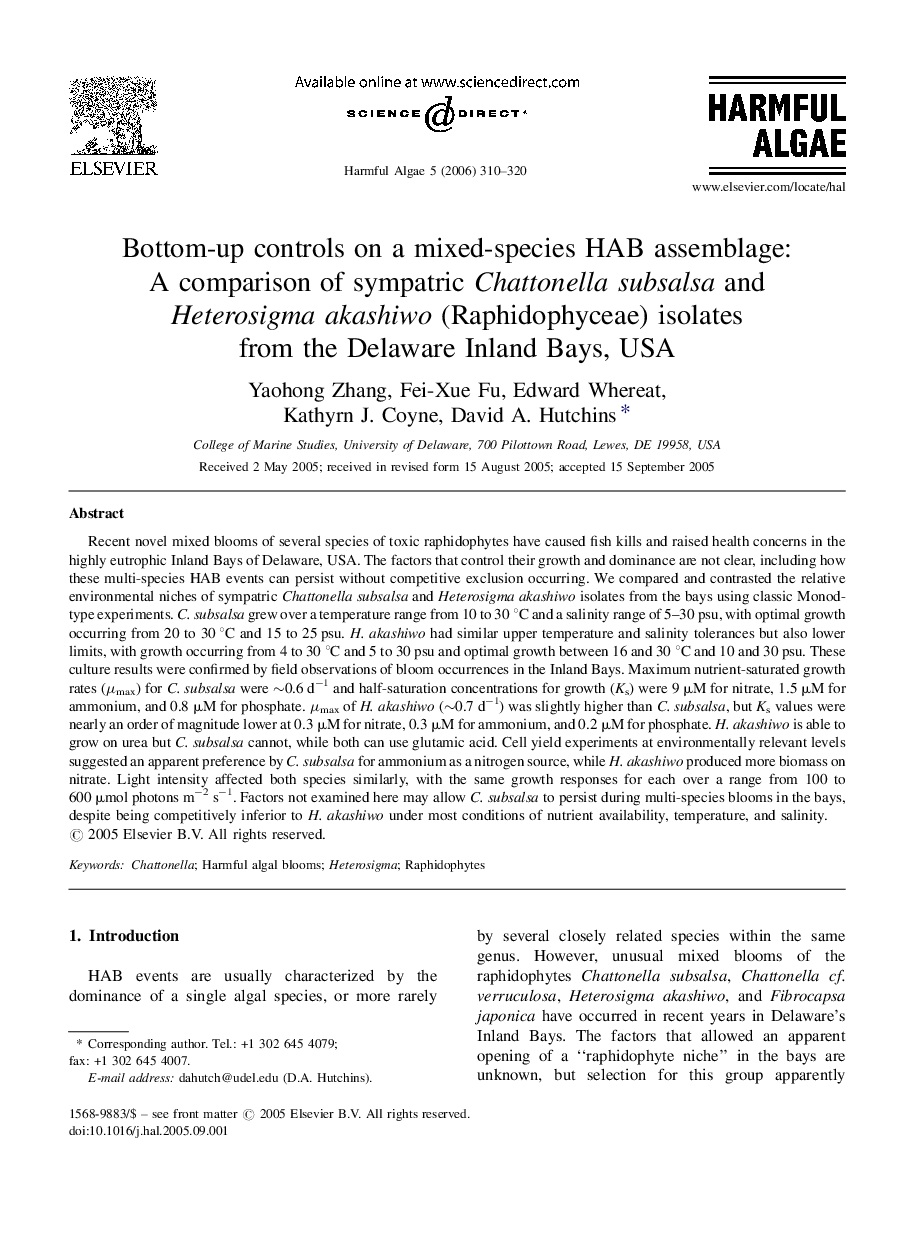| کد مقاله | کد نشریه | سال انتشار | مقاله انگلیسی | نسخه تمام متن |
|---|---|---|---|---|
| 4546314 | 1327510 | 2006 | 11 صفحه PDF | دانلود رایگان |

Recent novel mixed blooms of several species of toxic raphidophytes have caused fish kills and raised health concerns in the highly eutrophic Inland Bays of Delaware, USA. The factors that control their growth and dominance are not clear, including how these multi-species HAB events can persist without competitive exclusion occurring. We compared and contrasted the relative environmental niches of sympatric Chattonella subsalsa and Heterosigma akashiwo isolates from the bays using classic Monod-type experiments. C. subsalsa grew over a temperature range from 10 to 30 °C and a salinity range of 5–30 psu, with optimal growth occurring from 20 to 30 °C and 15 to 25 psu. H. akashiwo had similar upper temperature and salinity tolerances but also lower limits, with growth occurring from 4 to 30 °C and 5 to 30 psu and optimal growth between 16 and 30 °C and 10 and 30 psu. These culture results were confirmed by field observations of bloom occurrences in the Inland Bays. Maximum nutrient-saturated growth rates (μmax) for C. subsalsa were ∼0.6 d−1 and half-saturation concentrations for growth (Ks) were 9 μM for nitrate, 1.5 μM for ammonium, and 0.8 μM for phosphate. μmax of H. akashiwo (∼0.7 d−1) was slightly higher than C. subsalsa, but Ks values were nearly an order of magnitude lower at 0.3 μM for nitrate, 0.3 μM for ammonium, and 0.2 μM for phosphate. H. akashiwo is able to grow on urea but C. subsalsa cannot, while both can use glutamic acid. Cell yield experiments at environmentally relevant levels suggested an apparent preference by C. subsalsa for ammonium as a nitrogen source, while H. akashiwo produced more biomass on nitrate. Light intensity affected both species similarly, with the same growth responses for each over a range from 100 to 600 μmol photons m−2 s−1. Factors not examined here may allow C. subsalsa to persist during multi-species blooms in the bays, despite being competitively inferior to H. akashiwo under most conditions of nutrient availability, temperature, and salinity.
Journal: Harmful Algae - Volume 5, Issue 3, April 2006, Pages 310–320